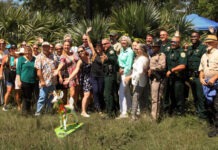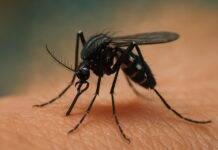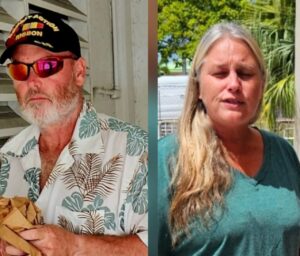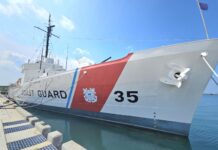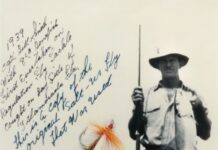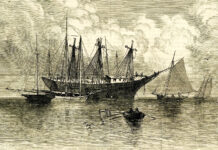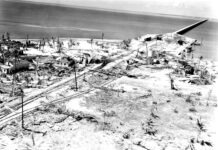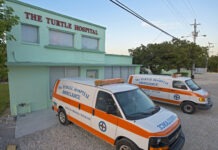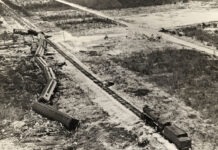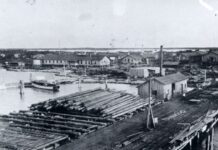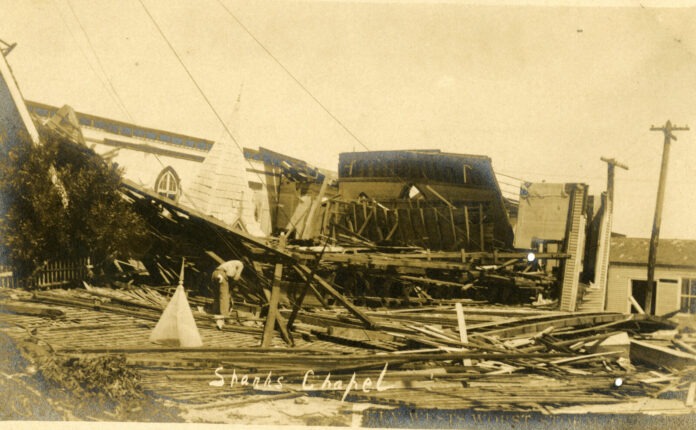
Some people say Florida doesn’t have seasons. They are wrong. They might not be traditional seasons, but they come around as surely as spring and fall every year.
Among the list, Florida has stone crab season, mini-lobster season, tourist season and off-season. There are others, including the big one, hurricane season.
It is my least favorite and one of the low-key things I don’t like about living in the Keys. Growing up in Southern California, it barely rains there, much less has hurricanes. There are earthquakes, but earthquakes don’t pop up on the radar for days and days with every gust and squall broadcast on national television. There is zero notice. All of a sudden, the earth rumbles, shifts and shakes. While I experienced many tremors and a few minor earthquakes, nothing devastated the ground on which I stood.
Officially, hurricane season begins on June 1 and ends on Nov. 30. It is not unheard of to have tropical development in May. While it is uncommon for it to occur in November, tropical events have been recorded then, too. Though not the lone example, in 2020, Hurricane Eta reached Category 4 status as it meandered through the Caribbean. On Nov. 9, registering as a tropical storm, Eta made landfall near Lower Matecumbe Key in the Upper Keys.
The late summer months, when the water is at its warmest and the conditions ripe for tropical development, are a different story. Statistically speaking, Sept. 10 is considered the peak of the Atlantic hurricane season. This year, not a single named storm has affected Florida or the Keys – so far. Since 1950, this has only happened eight times: 1962, 1966, 1975, 1976, 2000, 2014, 2016 and 2025.
While I hate to jinx things by taking a closer look at the state of the tropics, the first half of hurricane season has not seemed like business as usual. Dry air and Saharan dust have been blowing in the wind, but those influences are forecast to dissipate. The important thing to keep in mind is that this is not the time to be lulled into a false sense of nothing’s going to happen this year. The history books are filled with hurricanes that hit the Keys in the latter half of the season.
October has had some doozies. A 1906 storm spawned in the Caribbean, crossed the Keys and reached the southern tip of Florida in a northeasterly direction. The eye of the hurricane passed over Long Key on Oct. 17. The Key West Extension of Henry Flagler’s Florida East Coast Railway was under construction, and Long Key was home to a work camp.
Two houseboats used for workers had been moored on the Gulf side of the island; each, secured with six mooring lines and an anchor, housed 150 men. According to Mr. W.P. Dusenbury, it was 5 a.m. when the furies of the storm snapped the anchor chain and the two Long Key houseboats broke free. One washed out into the Gulf, only for the wind and waves to push it back to shore.
House Boat No. 4, on the other hand, was driven around the tip of the island, blown out into the Gulf Stream, and pounded in the storm-driven swells until it splintered. Only 83 men from House Boat No. 4 survived. One of them was Dusenbury, who recounted his tale when he was discovered out in the Atlantic, clinging to a piece of wood, and rescued.
The 1906 hurricane resulted in the deaths of at least 193 people.
Three years later, nearly to the day, another October hurricane struck the Florida Keys. On Oct. 11, 1909, the storm traveled up the Keys like it was following the right of way of Henry Flagler’s train. It was responsible for some 15 deaths in the Keys. In Key West, over 300 boats were destroyed in the harbor, and as many as 400 buildings were destroyed by tidal surge or hurricane-force winds.
The following year, on Oct. 17, 1910, a storm that was initially expected to pass south of Key West proved to be unpredictable, making a three-quarters turn and essentially doubling back to strike the Keys. The eye of the hurricane passed near Key West. At Sand Key, a Weather Bureau observer reported, “The force of the wind drew large nails from the door. The sand was all washed from sight by this time, and monster waves broke over the whole island.”
The French steamer Louisanne ran aground near the Sombrero Key Lighthouse. Because of ample warning, none of the 1,500 railroad workers employed at the time were lost. It helped that in September, a set of protocols was put in place to prevent the loss of life, special precautions in case of emergency. Substantial damages were attributed to railroad construction facilities.
On Oct. 2, 1966, Hurricane Inez approached the Keys. It had already devastated the Caribbean, killing 27 people before it reached the Dominican Republic, where it took an additional 75 to 100 lives. Inez was responsible for another 750 deaths in Haiti. It was a tricky storm to track. After pummeling the Caribbean, it crossed Cuba and emerged in the Straits of Florida as a tropical storm.
Inez moved northeast before making a sharp left, hooking around and taking aim at the Keys. The storm moved down the island chain. At Plantation Key, sustained winds reached 98 mph. Observers at Big Pine Key estimated sustained winds to be about 150 mph. While no deaths were reported in the Keys, 45 Cubans seeking refuge drowned offshore of Miami.
When the storm tracked down the island chain and re-entered the Straits of Florida, it was not done and struck Cuba again because, if nothing else, hurricanes are unpredictable. It is why the meteorologists repeat the importance of not just looking at the cone. The cone represents a good guess, but not a guaranteed path. Deviations in the projected path happen all the time.
Hurricane Wilma, too, was an October hurricane. Wilma arrived on Oct. 24, 2005. While it did not land in the Keys, its impacts were felt from Key West to Key Largo. The storm surge associated with the hurricane was the highest since Hurricane Betsy in 1965. Nearly all of Key West was underwater, with 4 to 8 feet of tidal surge washing over the island chain between Key West and the Upper Keys.
So, yes, it has been a quiet season so far, but history is filled with late-season hurricanes. Let’s hope this quiet trend continues.

